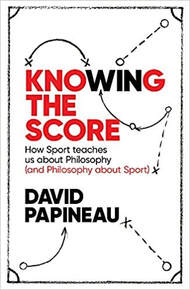
Reading the book was like revisiting so many posts on this site. A few posts addressed the definition of sport. Papineau is closer to the posts that emphasis physical activity (one of our contributors talked about changing one’s footwear). He is somewhat critical of the approach taken by the philosopher Bernard Suits. Suits perspective has been supported in posts on this site. Papineau does an excellent job of discussing sports people and who they represent. A variety of opinions and perspectives have been expressed on this site. More may follow as one contributor, was delighted to see England win a World Cup in cricket last year, has strong views on the “Irish captaincy”.
One of the five sections of the book is devoted to “Rules”. It opens with a discussion of Thierry Henry’s handball in a game against Ireland. That topic, and subsequent events, got some coverage here. As does Trevor Chappell’s underarm bowling. And, the 1994 Caribbean Cup. And, situations where one is expected to foul an opponent. It would seems sports fans from different disciplines are drawn to the same topics and examples.
The first section of the book is called “Focus”. Here Papineau strays a little into what might be formally the area of psychologists. Plenty of us economist do likewise. Both philosophers and economists are like kids playing ball on a neighbour's lawn. The positioning of this material at the start of the book probably reflects a judgement call on what gets the most readers interested.
There is a coherence and depth to this book that cannot be achieved on a website. There is also a breath of experience that can only come from a lifetime of interest in sport (I did a bibliographic web search to confirm that the author had the time for such experience). Reading the book is like being in the company of sage relaying their life experiences and lessons.
I’m slow to follow Matthew Syed’s advice to readers “A book that every sports fan should read and every sports writer should absorb”. It might be a useful companion for those who have dredged the depths of statistical relationships to understand sports. As the trainers of AI machines have discovered, the data on which the machines are being trained can surface biases in our society that we want to remove. If you want to ponder the sporting world then this book is a great place to start. I wish I had read it when it was published three years ago.
 RSS Feed
RSS Feed